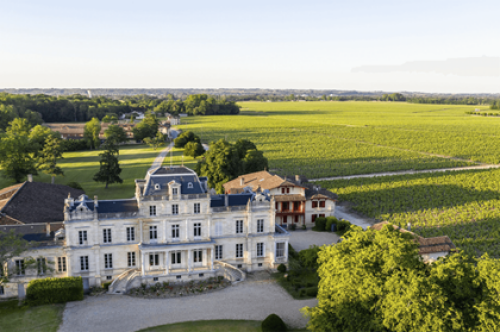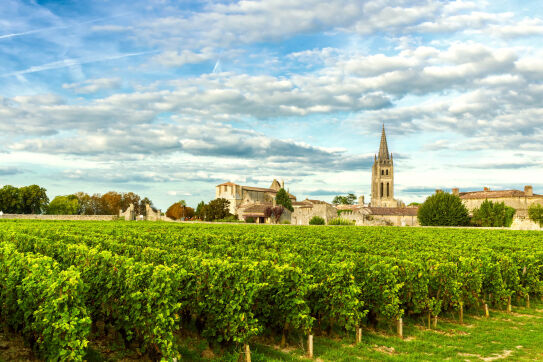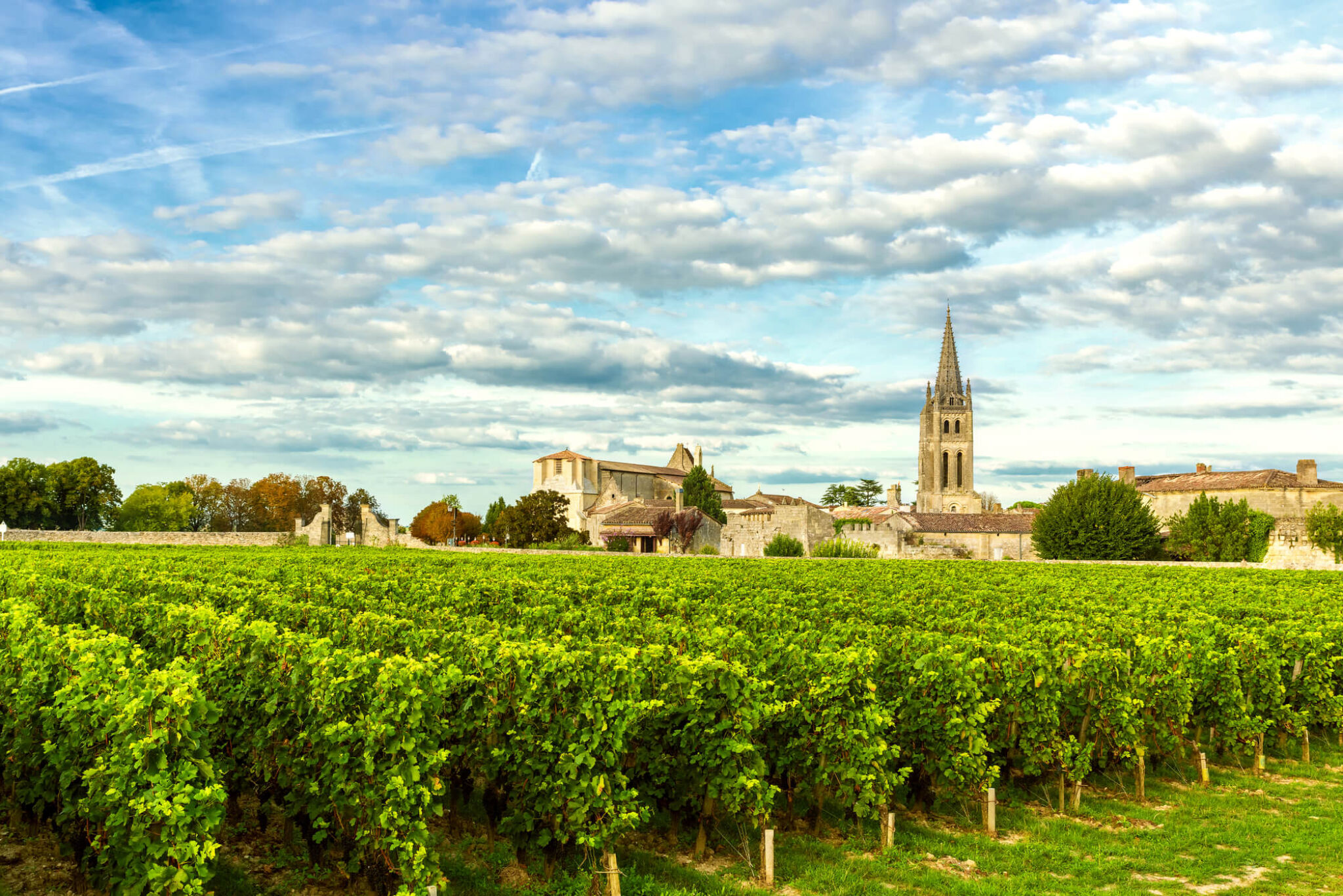By Nick Adams MW
Welcome to Part II of the review of Bordeaux when we look at the main regions and styles in more detail – and along the way recommend some fine examples from the Peter Graham Portfolio.
In what is a relatively plain part of France, the area of Bordeaux – end especially the Médoc “left bank” - is decorated with a series of sumptuous mansions or “Châteaux”, the very epitome of the image of this classic wine region. Over the centuries certain delimited areas became synonymous with the highest quality wines and in the 1930s this was formally defined in the now familiar Appellation system.
BORDEAUX APPELLATIONS
The most famous Appellations in Bordeaux are:
- Barsac (sweet white)
- Margaux (red)
- Pauillac (red)
- Pessac Léognan (red and dry white)
- Pomerol (red)
- Sauternes (sweet white)
- St. Émilion (red)
- St. Estèphe (red)
- St. Julien (red)
We shall return to highlights from these shortly. However, there are numerous other important areas (please refer to the map in Part I), where good quality and more affordable wines can be sourced.
The Gironde, further south in Bordeaux, splits into two tributaries – the Garonne and the Dordogne. In the “middle” is an important appellation for more commercially priced – and often particularly good white wine - called Entre-deux-Mers. Increasingly these Sauvignon Blanc dominated wines have proven a useful entry point for the region.
Other “satellite” regions of note, where particularly good and affordable (mainly red) wines can be found include:
- Côtes de Bourg
- Côtes de Castillon (source of a lot of the Merlot led every day Bordeaux brands)
- Fronsac
- Lalande de Pomerol
- Montagne St. Emilion
- Moulis
- Listrac
- Médoc & Haut-Médoc (this area includes 5 Grand Cru Classé estates by the way)
- Monbazillac (for Sauternes style sweet wines)
MAIN GRAPE VARIETIES
The (black) grapes in Bordeaux are dominated – in terms of plantings by area - by Merlot (62%), Cabernet Sauvignon (25%), Cabernet Franc (also known as “Bouchet” in Pomerol and St. Émilion) (12%) and a small amount of Petit Verdot, Malbec and Carmenère (1% in total). The white grapes are Sémillon (54% by area), Sauvignon Blanc (36%), Muscadelle (7%) and a small amount of Ugni blanc, Colombard and Folle blanche (3% in total). Historically, Malbec was one of the main red grape blends but has been all but grubbed up, which is ironic when you consider the success Argentina is having with the vine (and likewise Chile with Carmenère). Petit Verdot is the latest ripening of all the varieties and is only used in small proportions, and almost exclusively in the left bank.
These figures and mix though belies several trends and skews:
- Increasingly dry white Bordeaux is dominated by Sauvignon Blanc, with decreasing proportions of Sémillon in the blend
- Sweet (noble rotted) white wines remain dominated by Sémillon, with judicious amounts of Sauvignon added
- Carmenère is making a comeback in the region – especially in the “right bank”
- And maybe Malbec to follow?
- Cabernet Sauvignon remains the dominant variety in the “left bank”
- Merlot remains the dominant variety in the “right bank” and for everyday Petits Châteaux and Bordeaux blends – not last as it ripens significantly earlier than Cabernet, so is a safer commercial bet as well as being softer and more accessible to drink when younger
- Cabernet Franc is significantly more important than Cabernet Sauvignon in Right Bank blends
And another quirky fact, Sauvignon Blanc is the “mother” of Cabernet Sauvignon, when it was crossed with Cabernet Franc.
The Concept of First (“Grand Vin”) and Second Wines
The term “Grand Vin” in Bordeaux is synonymous with the highest quality selection that any Château can produce and release in any one year. That means that there is also a quantity (in some years significant) of “declassified” wine. For many years Châteaux sold this off in bulk – often anonymously – but the cult of the “Second Wine” goes back many years. Château Pichon-Lalande showcased their “Second Wine” in a Moscow fair in 1890, and Château Margaux famously first produced Pavilion Rouge in 1908.
The advantage of a good second wine is that it is a good income earner for the Château, but as importantly the de-selection process only further elevates the quality of the Grand Vin. In fact, in some cases, the principle has been extended to include a “Third Wine” – for example at Château Latour under the banner of “Pauillac” - the second wine being Les Forts de Latour. Also, these second wines are (obviously) less expensive (but not cheap!) and mature more quickly, which is attractive to both private individuals and especially restaurants.
Quite often the grape variety mix will be different between the Grand Vin and the Second Wine with the blend of the second wine usually designed to make the wine more forward and accessible for the drinker (ie an earlier drinking window).
Due to Bordeaux’s climate harvest time is often a very tense affair, as September and October can see significant rainfall and increased levels of humidity. Ironically, this can be highly beneficial to produce classic noble rotted sweet wines, where the humidity – balanced with the right amount of warmth and sunshine (humid mornings and sunny afternoons) can create the ideal conditions for the Botrytis Cinerea mould, which shrivels the grapes and super concentrates the juice (please see pictures of this affecting Sémillon grapes over a period of weeks in Sauternes).
Botrytis Cinerea mould on Sémillon grapes
Remarkably these grapes yield only 10% of their original capacity but the juice is so sensationally concentrated, sugar saturated, and transformed that the resultant wine is one of the world’s most hedonistic pleasures. But such is the reliance of nature that these wines cannot be made – or made to high quality – every year. The greatest estate is Château Yquem (the original greatest growth in the 1855 classification) - other great Châteaux include Climens, Rieussec (available in the Peter Graham portfolio), and Suduiraut.
The key varieties are:
Sémillon – with its thin skins and rich honeyed texture it is ideal as the foundation of all great Sauternes/Barsac
Sauvignon Blanc – perfect as the thicker-skinned counterfoil to Sémillon, providing the acidic lift and vitality for balance in the overall cuvée
A little (fruity) Muscadelle is also grown and used in some cuvées in proportions of around 5%.
A CLASSIC SAUTERNES
Perfect with rich and caramelised sugar desserts – or cheese for an alternative - or try the French way with a savoury pâté and toast. The ½ bottle size is ideal between 4 people for example.
A top-notch example from Peter Graham is the Château Villefranche – honeyed and textural with notes of Seville orange marmalade and dried apricots – sweet but not remotely heavy – an elegant Sauternes.
Sweet Bordeaux's
RED WINES
For red wine making the ripening and harvest period is especially critical for Cabernet Sauvignon. This is because this variety (except for the sparsely grown Petit Verdot) is the last to ripen. Merlot and Cabernet Franc can ripen up to 3 weeks earlier in the same vineyard as Cabernet Sauvignon. And this goes someway to explaining why many vineyards grow a mix of varieties as it is a form of commercial insurance in what is a relatively marginal climatic area.
Inland on the heavier, more clay and colder soils of the Right Bank, Cabernet Sauvignon is by far the smallest proportion planted and there is no Petit Verdot. Here the earlier ripening Merlot is king, and the earlier ripening Cabernet Franc takes on the blending role of Cabernet Sauvignon. By contrast, on the Left Bank Cabernet Sauvignon is by far the most important variety and especially so in the Médoc where the gravel soils are at their deepest and reflected heat and light assist the ripening process.
So, blends in classic left bank areas such Margaux, Pauillac, St Julien and St. Estèphe will always be dominated by Cabernet Sauvignon, whilst classic right bank areas such as Pomerol and St Émilion will always be Merlot dominant.
So, what does each variety bring to the mix – in simple terms?
Cabernet Sauvignon – high acid, high tannins (structure), bold cassis or blackcurrant fruit and herbaceous leafy notes, leather with age
Merlot – higher alcohol, slightly softer tannins and acidity, bold plum fruit, and notes of toffee with age
Cabernet Franc - slightly softer tannins and acidity, bright red, and black fruits, cedary notes
Bordeaux is also synonymous with some of the longest lived table wines in the world. This is partly down to the DNA of the grapes used (as outlined above) but also due to the highly structured way the top wines are made. In general Bordeaux tends to use longer periods of cuvaison (by that extended contact between the wine and skins); greater use of Press Wine – this is finished wine squeezed out of the grape skins after fermentation has completed – (which is higher in colour and tannins as a result); and more use of and longer time in oak (often a high percentage of which is brand new) than other classic red regions in France. This creates a style which the French refer to as “Vin de Garde”.
THREE LOVELY WINES
Château Surain 2020 - is a classic example of a Merlot led open, supple, and fruity, easy drinking red Bordeaux – coming from the right bank area of St Gervais – and under the same family ownership for 100 years. From the brilliantly ripe 2020 vintage. Very good value for money.
Château Giscours Margaux 2015 - is a classic Grand Cru, Cabernet Sauvignon led blend, left bank Bordeaux from the world-famous AOC commune of Margaux. After a period in the doldrums Giscours has come back all guns blazing (under new ownership) in the last 12 years and the 2015 is one of its most successful releases in that period. With 8 years under its belt this wine is entering its drinking window with lovely cassis fruit and a mineral note with fine grained tannins – decant for a couple of hours before serving. (Image right Château Giscours Margaux).
Château La Patache Pomerol 2019 – by contrast is a superb Merlot and Cabernet Franc blend, right bank Bordeaux from the revered AOC of Pomerol and the sumptuous 2019 vintage. This is a velvety Bordeaux with fine notes of cherry, black plum, even a hint of chocolate. Again, I would decant a couple of hours before hand.

All these wines will work well with any red meats, savoury dishes, and roasted vegetables, or ratatouille.
(Dry) White Wines
The greatest area for dry white Bordeaux is unquestionably Pessac-Léognan. Here they usually take Sauvignon Blanc led blends to amazing levels of texture, fruit, and vibrancy. And unusually in the world of Sauvignon based wine most examples are barrel fermented. They manage, skilfully, to keep the oak in the background and still let the Sauvignon fruit character sing. As mentioned in the previous blog this is the only area where both red and white wines from the same estate can be classified as Grand Cru Classé. And as mentioned the Entre-Deux-Mers right in the heart of Bordeaux is a good source for value for money, again Sauvignon based, usually unoaked wines.
Please “watch this space”, as they say, as Peter Graham Wines are looking hard at these areas and hope to have news soon of some exciting new listings.




